Published May 30, 2012
One Trek Mind #30: Michael Piller's Greatest Hits
One Trek Mind #30: Michael Piller's Greatest Hits
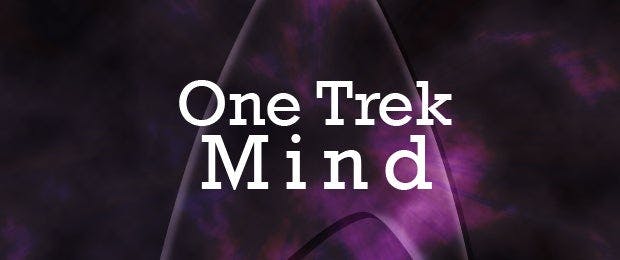
Everybody knows the name Gene Roddenberry, but we true Star Trek fans know that many producers, writers and showrunners took Gene's vision and expanded it into the greater Star Trek Universe that continues to delight us in this and all parallel timelines. One of the key figures in our multiverse is Michael Piller.
Piller started as a writer for The Next Generation and eventually became one of its executive producers. He was the co-creator (with Rick Berman) of Deep Space Nine and (with Berman and Jeri Taylor) of Voyager. He was also the screenwriter of Star Trek: Insurrection. Yesterday would have been his 64th birthday, had he not been tragically taken from us in 2005 at age 57.
Considering just how many hats Piller wore, it is difficult for anyone who wasn't there to know precisely where his ideas end and the teamwork of the greater Trek collective begins. He is, however, given teleplay, co-teleplay, story or co-story credits on 38 different episodes. That's as good of a baseline as any to rank what I consider Piller's Top Ten.
Note: TNG's “Yesterday's Enterprise” does not have Piller's name in the credits, though he did contribute greatly to the writing. Guild rules are Guild rules, however, and since he's not on the card, it will not be on this list. My guess is that he had his fingers in a lot of other great episodes, for which he is uncredited, but until that info comes out, we're stickin' with this.
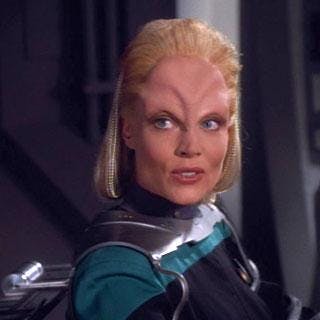
10 – Melora (DS9)
Star Trek is often at its best taking a topical issue, giving it a slight sci-fi nudge, then shoving it back in our faces.
“Melora,” an early DS9 episode when Dr. Bashir was still a young stud, takes a good, three-dimensional look at people with disabilities. This aired just three years after the People with Disabilities Act was signed, and the concept of the disabled as a minority group with rights and, in effect, their own culture, was very new. “Melora” introduces us to the Elaysians who hail from a low-gravity planet. As such, they need wheelchairs to exist on a Federation (or Cardassian) station like Deep Space Nine. Dr. Bashir falls for an Elaysian, but is it right for him to want to “cure” her?
Also – this episode has a quite zippy Quark B-story.
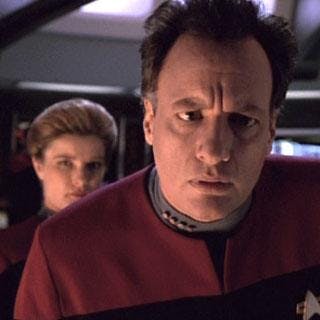
9 - Death Wish (Voyager)
If Q is omnipotent can he go to the Delta Quadrant? Of course he can! And so John de Lancie makes his first appearance on Voyager.
But can a member of the Q Continuum kill himself? That… is a little more difficult, and Captain Janeway ends up caught between a suicidal Q and the Q we know and (kinda) love. Along the way there's a whacked-out sci-fi throwdown that reduces the size of Voyager to a subatomic level and zips it back to the time of the Big Bang. Eventually, there's a trial, but the script gets flipped and it is Janeway who is running the court, not on trial. Isaac Newton, a Woodstock hippie named Maury Ginsburg and Commander Riker (!) get called in for questioning.
We'll be hearing from this episode again when we talk about “Best Fan-Service Moments!
Piller collaborated on “Death Wish” with his son Shawn, who has continued in showbiz, producing the shows like Greek, Haven and The Dead Zone. He's also directed a feature film called Sexy Evil Genius with Katee Sackhoff and Seth Green that ought to come out sometime next year.
8 – Basics, Part II (Voyager)
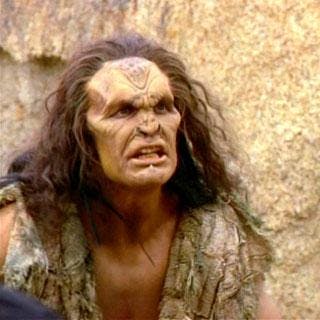
Normally I like to consider two-parters as just one episode, but in the case of Voyager's season-two closer/season-three opener, it's the second half that really kicks into high gear.
Brad Dourif's Suder goes out in a blaze of glory. Seska (the Bajoran Maquis member who was actually a Cardassian spy) gets bumped off, too. And Janeway has to lead the team in survival against brutal savages and nasty beasts. What is this, Land of the Lost? It is, actually, all very good fun.
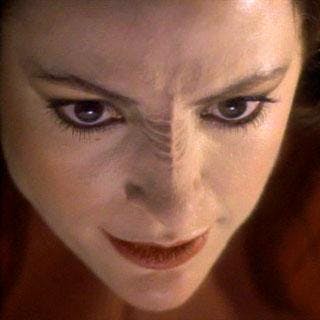
7 – Emissary (DS9)
Pilot episodes are tough. Heck, TOS had to take a mulligan after “The Cage” and, I can't lie, TNG's “Encounter at Farpoint” kinda stinks. “Emissary” clearly sets up DS9's unique setting, its zillion new characters, darker tone, and, importantly, differentiates it from TNG. It does so in a nicely economic fashion, introducing our new hero, Commander Sisko, as a grieving widower whose wife was killed by Picard when he was Locutus of Borg.
Even as a two-parter, “Emissary” has a little trouble cramming it all in (the Bajorans, the Orbs, the wormhole, Odo's mysterious background, the Promenade, on and on and on) but it makes clear what DS9 will represent to Trek fans – an opportunity to truly dig in and get to see a fully fleshed-out corner of the Federation, as opposed to warping off to a new planet each week.
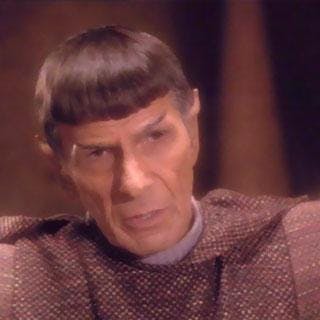
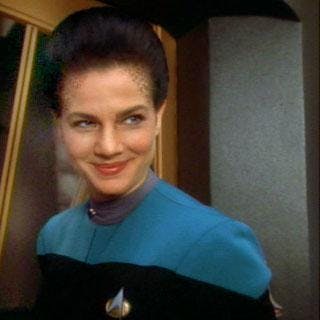
5 – Playing God (DS9)
Here's a terrific little episode that has always been a favorite of mine. In it, we get a “behind the scenes” look at how Trill are selected for potential joining. With Dax giving her subject a little tour, we get to soak up some of the color of the station, like checking out the Klingon restaurant, or watching O'Brien and Kira try and hunt down Cardassian voles.
Eventually, the story kicks in and it is a doozy – subspace seaweed attaches to a runabout while traversing the wormhole, which may or may not have created a microscopic proto-Universe. At first it is fun, like Lisa Simpson's science project, but soon it becomes not only a danger, but a moral dilemma.
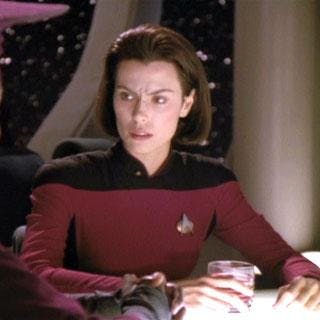
4 – Ensign Ro (TNG)
Here comes a bold statement. Raise shields. Other than “Encounter at Farpoint,” there has been no more important episode of Star Trek in the post-TOS era than “Ensign Ro.”
Okay, hope that didn't cause a warp core breach. I'm actually quite serious. This is the episode that introduces us to the Bajorans, sure, but it also presents something far more groundbreaking: discord in the Federation.
With only a handful of exceptions, Star Trek's vision of the future is one where our government is altruistic and wise. The plight of the Bajorans inserted a little bit of the “real world” into Federation politics. From “Ensign Ro” you don't only get the central conflict of Deep Space Nine, you create the framework for the Maquis, which is what gets Voyager going.
The somewhat darker-in-tone episode represents a major paradigm shift for the franchise. It is interesting to note that Gene Roddenberry died less than three weeks after this episode aired.
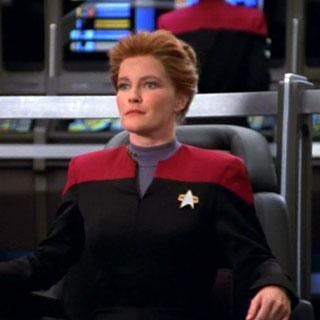
3 – Caretaker (Voyager)
More so even than “Emissary,” the pilot for Voyager does a tremendous job at introducing the central characters, conflicts and setting of the new series.
This isn't to imply that Voyager didn't launch without some faults. (Oh, what some different casting would have done in one or two key positions. . .) But, by and large, “Caretaker” is quite successful at getting everyone together and then plunking them way, way off in the Delta Quadrant. There's that moment of realization when it is clear they aren't getting home any time soon – that this isn't going to be a typical adventure – that I think lands quite well. It's also a real testament to Kate Mulgrew, coming in at the very last minute to play the part of Janeway, and still being a forceful commander.
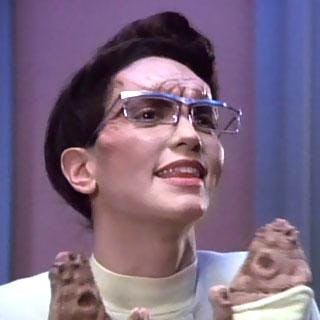
2 - First Contact (TNG)
No, not the movie, the season-four episode. It's got an inside-out storytelling device, a ticking clock AND Bebe Neuwirth as a nerdette who lusts for aliens? Could there be anything more terrific?
What's wonderful about “First Contact” is getting to see more of the Federation's process – how it goes about welcoming new warp-capable cultures into the fold. Of course, something has to go wrong (like Riker ending up injured in a hospital.)
“First Contact” is a lot of fun because it presents our characters as outsiders – a necessary jolt to the system every now and then.
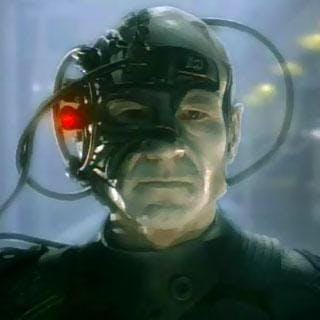
1 – The Best of Both Worlds (TNG)
I remember watching this in my grandmother's kitchen, ostracized while the rest of the family was elsewhere, and FREAKING OUT at the cliffhanger in part one. It was a long summer until we got to the conclusion – though did Captain Picard ever really find closure from his abduction by the Borg?
During TNG's first run there was definitely a stigma to being a Star Trek fan. All those horror stories about being teased as a nerd – some of them were true. But this episode was so badass that it even excited some of the kids who wouldn't dare involve themselves in a geeky enterprise. It may be hard to imagine for young people today, what with comic book movies and sci-fi being so popular now, but back in the day liking Trek wasn't something you necessarily advertised about yourself to just anyone. The battle with the Borg in “The Best of Both Worlds,” however, may be representative of the start of a slow reversal in schoolyard thought.
This is just tip of the iceberg for Michael Piller's contributions to Star Trek. Please let me know what some of your favorites are.
------------
Jordan Hoffman is a freelance writer, critic and independent film producer living in New York City. He fell in love with Star Trek through TOS reruns just as TNG was getting ready to launch. On his BLOG, Jordan has reviewed all 727 Trek episodes and films, most of the comics and some of the novels. He has a funny story about the one time he met Leonard Nimoy. Click HERE to follow him on Twitter.

